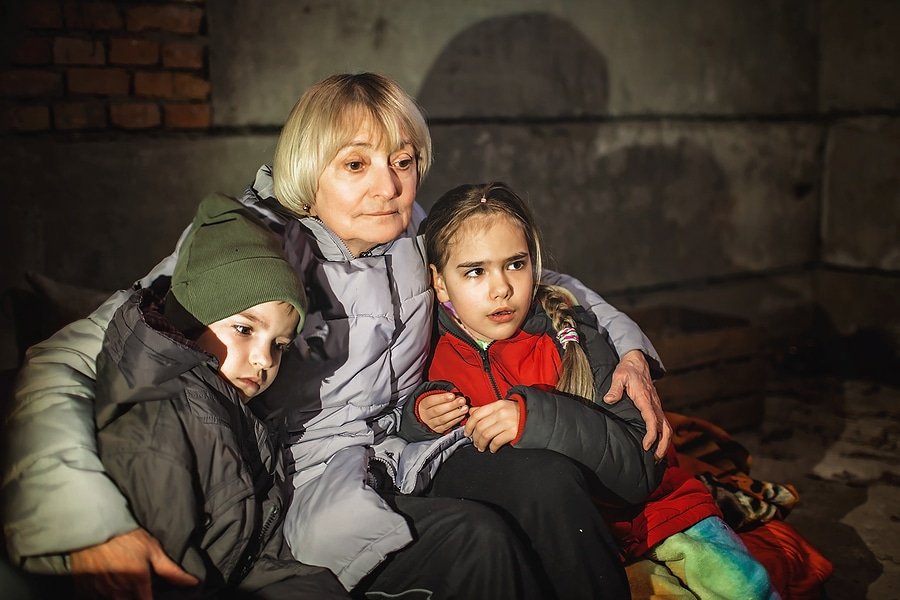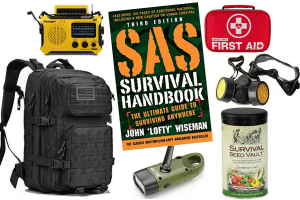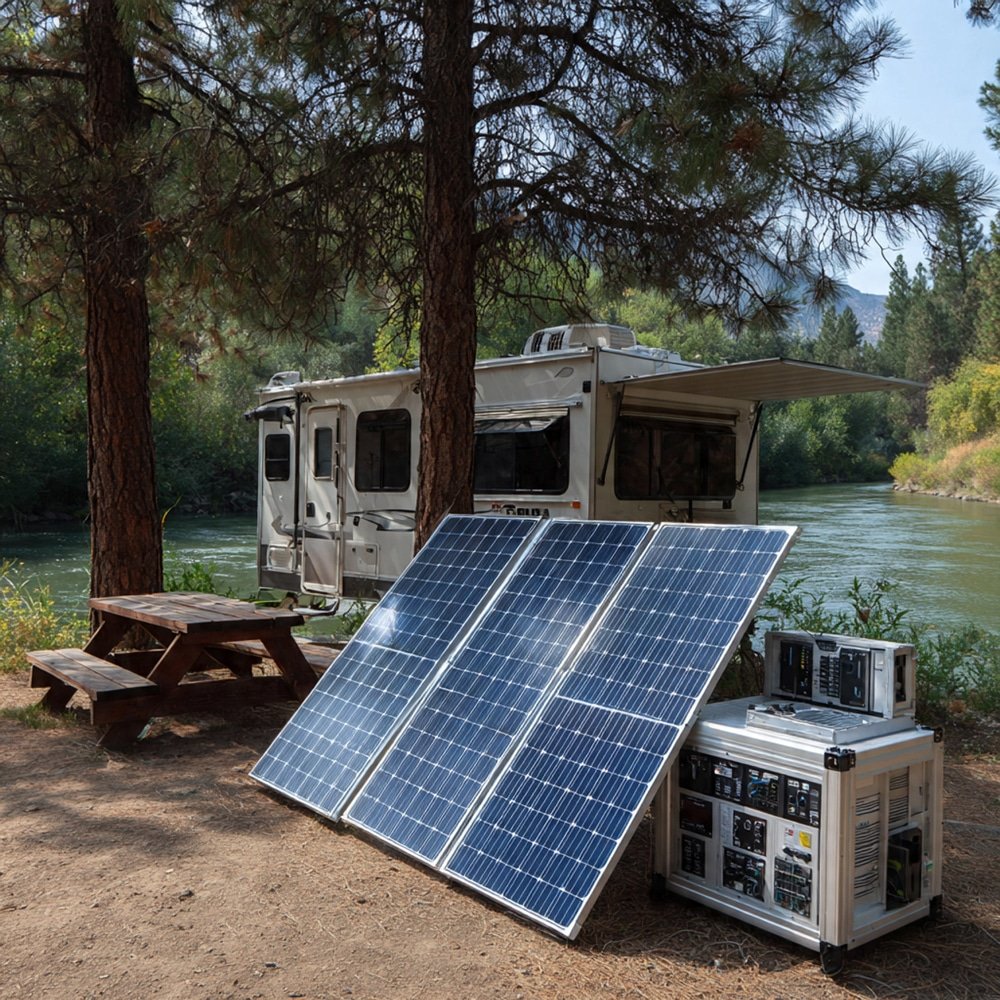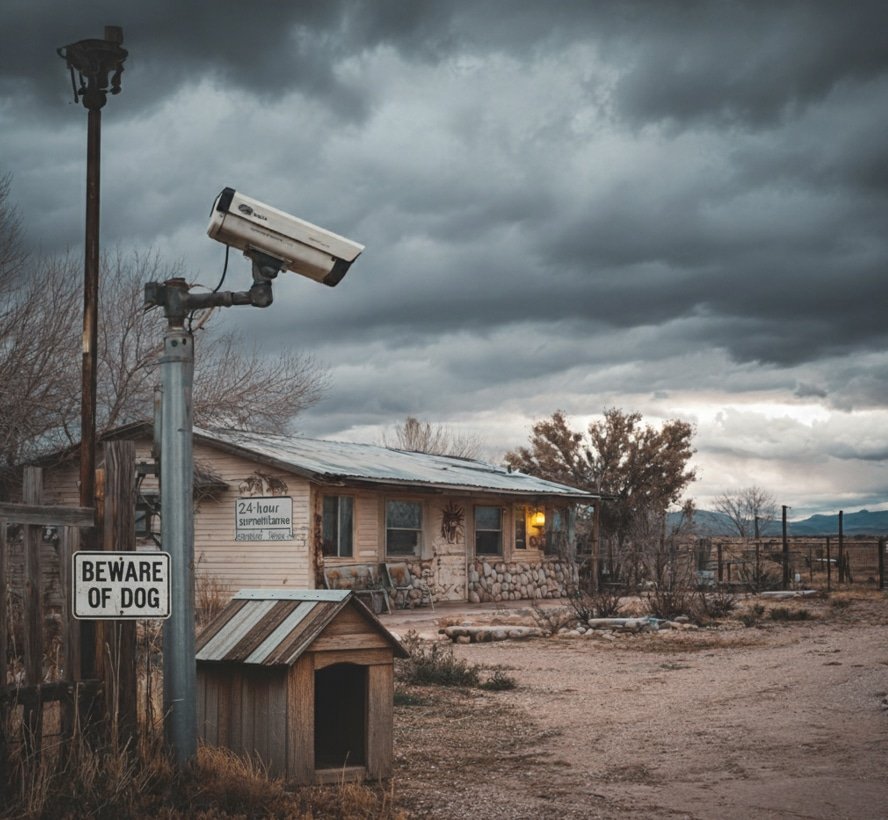Since the Cold War, people have been interested in learning how to build an underground bomb shelter. It’s a way to protect yourself and your family from a potential nuclear attack and other disasters, man-made or otherwise. With all kinds of bad news happening now, it does seem like a good idea to build a bomb shelter right now. If you’re worried about World War III, nuclear attacks, or the impending apocalypse then it’s right about time to start prepping and building that underground bunker.
A major part of any emergency preparedness plan is to have some kind of shelter where you can hide and ride out the storm, so to speak. You can turn your home into a fortress where you can bug in place. You can also have a bug out shelter separate from your home. And then there’s the option of building a bomb shelter or bunker.
But what exactly is the best option for you and your family? It all depends on your specific needs and situation. In general, though, you may want an underground bomb shelter. Not only can it protect you from bomb attacks, but you’ll also be safe from nuclear fallout, EMPs, tornadoes, home intrusion, and other emergencies.
[lookbook id=”85862″]
What is A Bomb Shelter?
A bomb shelter is basically a fortified structure designed to shield people from an explosion. The walls and roof of a bomb shelter are made of thick concrete or metal, sometimes both. The doors are also reinforced and airtight. Bomb shelters can be built above ground or underground.
The US government built a number of fallout shelters in the 1960s, many of which are still in use today. You should know where these bomb shelters are so you know where to go when an emergency hits.
The problem is that they can easily get overcrowded and it may be difficult to survive if you’re forced to stay in the bunker for an extended period. This is why some people choose to build their own bomb shelters, either above ground or underground.
Bomb shelters come in all shapes and sizes, from small rooms to large warehouses. They can be built into the side of a hill, underground, or even in your backyard. The size and type of bomb shelter you need will depend on the number of people you need to protect and the threats you’re preparing for.

Why Build An Underground Bunker?
Bomb shelters and fallout shelters protect people during an emergency. Both shield against the deadly force brought about by bomb blasts and nuclear explosions. The thick walls and reinforced doors of a properly built bomb shelter can withstand the force of a bomb blast and keep those inside safe.
A fallout shelter is a kind of bomb shelter that safeguards against nuclear fallout and other hazardous materials. After a nuclear warhead is detonated, radioactive debris is spewed into the air and can stay there for weeks and even contaminate the ground for years. Fallout shelters provide a safe space where you can stay until the radiation levels go down and it’s safe enough to go out.
Both bomb and fallout shelters can also protect you from chemical warfare agents. These are deadly chemicals that can be used as weapons in warfare or terror attacks. They can be released into the air, contaminate food and water supplies, and cause serious health problems. A bomb shelter with proper ventilation and a filtration system can protect you from these chemicals by providing filtered air.

A bomb shelter can also be used as a safe room or panic room in the event of a home invasion, riots, or terrorist attack. It should be equipped with everything you need to survive such as food, water, a first-aid kit, weapons, and a way to communicate with the outside world. It’s always better to be prepared and safe than sorry, after all.
Underground bunkers, in particular, are the best shelter against bombs and nuclear fallout since they have an additional layer of protection — the earth itself. Since below-ground shelters require a proper air filtration system, you should also be safe from deadly chemical agents and nuclear fallout.
The problem with underground shelters is that they’re more expensive and complicated to build compared to above-ground shelters. Plus, it will flood in the absence of proper waterproofing and drainage. However, since it’s your life and those of your loved ones that are at stake, an underground bunker is definitely worth every penny.
You can customize the size of your private bomb shelter to fit everyone in your household. If you want to take in more people and if you have a big enough space on your property, you can build a bigger bunker. However, you’ll need more supplies to sustain everyone. The good thing about private bomb shelters is that you have more control over who can enter and exit the premises. It’s important to remember, though, that you should keep your bunker a secret. Otherwise, people will be flocking to your property in the event of an attack, which may endanger your family.
[lookbook id=”85865″]
How to Build An Underground Bomb Shelter?
Building an underground bomb shelter is the best way to protect yourself and your family from the dangers of a bomb blast. It’s an ambitious yet necessary project, especially with how things are going on in the world right now. But how exactly do you go about building an underground bomb shelter?
1. Find the right location
The first step to building a bomb shelter is to find a good location. Since you’ll be building a private bomb shelter, you should do it on your own property. For above-ground shelters, you can build them in your backyard if you have enough space. If you don’t, you can use your basement or the middlemost room at the ground level of your house.
You can also build a bunker under your home but this is better done before the actual house is built. So if you are to build your home, make sure you include your below-ground bomb shelter in the plans.
If your property is on sloping ground, don’t build your bomb shelter at the bottom or where water will easily collect. You don’t want flooding to be another thing you have to worry about during a bomb blast or nuclear fallout. Also, make sure your bunker is not too close to any power lines, trees, or other tall structures as these can catch fire or fall on your shelter and crush it.
Suppose you reside near government buildings, military bases, power plants, and other potential bomb targets. In that case, you should build your bomb shelter underground to increase your chances of surviving the blast and possible fallout. Though your best option would be to pack up and find a safer location, that might not always be possible. So if you can’t change residence, building an underground bomb shelter is your next best move.
2. Get permits
Even if you own the land where you plan to build your bomb shelter on, you still need to get the necessary permits from your local government. This is important because you don’t want to get in trouble for building an illegal structure. The process of getting a permit will vary depending on your location but it shouldn’t be too difficult. Basically, you’ll need to visit the local building department and find out what permits you need to get before starting construction on your bomb shelter. If you’re hiring a contractor, they’ll take care of the permits for you.
3. Make a blueprint
You need to plan everything before starting your bomb shelter. If you have the skills and know-how, you can make the blueprint or floor plan and build the bomb shelter yourself. Otherwise, you’ll need to hire an architect or engineer to do it for you.
Making a blueprint is important because you need to take into consideration the size of your bomb shelter, the type of materials you’ll use, and how many people will be using it. Furthermore, you should also plan what kind of amenities you want such as electricity, water, ventilation, bathroom, and waste disposal. You also need to make sure that your bomb shelter meets all the safety requirements set by your local government.
When making the blueprint for your underground bunker, you should also include an emergency exit in your layout. Aside from the main door, you should have another way out in case the main door is blocked by debris or if there’s a fire. It’s also a good idea to make the emergency exit hidden so that it’s not easily found by looters or intruders.
4. Choose the right materials
Perhaps the most important aspect of building a bomb shelter is using the right materials. The materials you choose will determine how effective your bomb shelter will be in protecting you and your family.
For the walls, roof, and floor of your bomb shelter, you should use thick concrete reinforced with steel rebars. These materials can withstand the force of a bomb blast and radiation. Concrete is also fireproof and waterproof, which are two more important factors to consider. Self-healing concrete is also available, which is even more durable and can repair itself in case of cracks.
Metal or steel is another good option for your bunker. Carbon-grade steel is ideal for underground bunkers. It expands and contracts with the temperature changes of the earth, which helps prevent cracks. Steel is also fireproof and waterproof.
Bricks can also be used for your bomb shelter. They’re not as strong as concrete and steel but should be okay as long as the bomb shelter is thick and sturdy enough. For high-risk areas, however, you may want a bunker made with steel, concrete, or a combination of both.
5. Dig, dig, dig
After all the papers are ready and decisions are made, it’s time for the fun part — digging. This is the most labor-intensive part of the process. But it’s also the most satisfying because you’ll get to see your bomb shelter take shape as you dig. If you’re hiring a contractor to do it for you, they will most likely use a backhoe to dig the hole for your bomb shelter. But if you’re doing it yourself, you’ll need to rent or buy a backhoe. You can also try to dig the hole by hand but that will obviously take much longer.
Underground bunkers should be at least 10 feet deep to withstand a nuclear blast. According to FEMA, a hurricane shelter should have 5 to 10 square feet of space for each person. This should be enough for everyone to be as comfortable as possible and prevent feeling claustrophobic. So if you’re a family of three, you need to dig at least 15 square feet that are 10 feet deep. Of course, the deeper your bunker is, the better. Dig an extra foot wider and deeper than what is required for your actual bunker. The extra space is necessary for you to work on the outer side of your bunker’s wall.
Take extra precautions if you’re doing the digging. Don’t forget to build trench support so the ground won’t cave in on you while you’re working on your bomb shelter. Set up a tent or tarp over the hole to protect you from the sun and rain. And make sure you have to stay drink enough water throughout the day to avoid dehydration and heatstroke.
6. Build the frame
Once the hole is dug, it’s time to start building the bomb shelter. Begin by building the frame of your bunker. If you’re using concrete, build the wooden forms first. These are the templates that will hold the wet concrete in place as it dries. Make sure the forms are strong enough to support the weight of the concrete. You can either build the forms yourself or buy them from a hardware store. If you’re buying them, make sure to get the right size for your bomb shelter. Also, make sure the space within the wooden forms is at least 2 to 3 feet thick so that your concrete wall and floor will have the same thickness.
You also need to reinforce your floor and walls with steel rebars. These are thick metal rods that will help hold the concrete together to further withstand bomb blasts and ground movement. Center the rebar mesh in the wooden forms before pouring the concrete.
7. Pour the concrete
Self-healing concrete is great for underground bomb shelters. It comes with adhesive contained in capsules or fibers that are mixed into the concrete mix. When the hardened concrete suffers a crack, the adhesive is released and helps fill in and repair the crack. This type of concrete is more expensive but well worth the investment for your bomb shelter. After the concrete has been poured and smoothed out, you need to let it dry for at least 24 hours before removing the wooden forms.
8. Build the roof
The roof of your bomb shelter is just as important as the walls. Aside from shielding you from the force of the blast, the roof will also keep the earth from caving in on you. Obviously, you want your roof to be as sturdy and well-made as possible.
The easiest way to build the roof is to use rafters. These are long, thin pieces of wood that you can use to create a frame for your roof. The rafter system will also help support the weight of the roofing material.
If you’re using concrete, you also need to use mesh rebars to reinforce your roof. Ideally, you should also use a thick metal sheet to increase the strength of your bomb shelter’s roof. This metal sheet will also help deflect the heat and force of the blast.
A little reminder: you need your walls to be strong enough to hold the roof and the ground over it. If your bomb shelter is huge, you’ll need to use pillars to support the roof.
9. Install wiring, plumbing, and ventilation
You need electricity and running water in your underground bomb shelter. The wiring and plumbing can be installed before pouring the concrete or even while it’s still wet. If the concrete has already dried, you can still incorporate the wiring, plumbing, and pipes or ducts for ventilation into the walls and roof but you’ll need to do some chipping and drilling to make way for them. This can be a delicate process and could possibly weaken your already hard concrete walls and roof. If the wires and pipes are within your walls and roof, it’ll be difficult to do repairs. You’ll have to chip away at the concrete to reach them.
The better option is to just attach the wiring, plumbing, and ducts to the surface. Just make sure to do a neat job of it so that your bomb shelter will still look presentable. This way, you can easily spot the damage and do the necessary repairs.
Remember that the power grid will likely go down after an attack. You’ll need generators and lots of fuel to power your underground bomb shelter, especially your filtration and ventilation system.
The plumbing, meanwhile, will connect to an underground well that you will build beside your bunker. That means more digging for you.
But since groundwater can eventually be contaminated by nuclear fallout, you’ll need a way to remove radioactive particles from the water. You need to install a system that performs carbon filtration, reverse osmosis, and ion exchange water softening. This should make contaminated water safe for consumption.
10. Build the main entrance
The main entrance to your bomb shelter should be inconspicuous. You don’t want anyone to know about it unless they absolutely need to. The entrance can be disguised as a small shed or a toolbox in the middle of your yard. It should also be far enough from your house so that it won’t collapse on top of your bomb shelter in the event of an explosion.
The entrance should also be easy to open from the inside in case you need to make a quick escape. It should be made of thick metal or concrete and must be reinforced with steel bars. The door should also be able to withstand a lot of force and heat.
11. Add the finishing touches
While an underground bomb shelter is meant to keep you alive, it wouldn’t hurt to make it as comfortable as possible. After all, you may be spending a lot of time down there. Start with some insulation and drywall. Finish it off with waterproof paint. Choose a calming color such as blue, grey, or white. If you want your bunker to feel more vibrant, add some bright colors.
You should also add some shelves and storage space for your food and supplies. It’s important to keep everything organized so you can easily find what you need in case of an emergency. Next, add some comfortable furniture. You don’t need anything too fancy but a few chairs and a table would be nice. A couch would also be a great addition, especially if you have a large family. However, you need to consider the size of your shelter. A couch may take up too much space so be wise in choosing what you keep in your bunker.
TV sets and radios would be great for entertainment and information gathering. You need to be able to stay updated on the situation outside. Just make sure not to overuse them to conserve your fuel and batteries.
And last but not least, don’t forget to add some personal touches. Add some photos of your loved ones and some of your favorite things. This will help you feel more at home in your bomb shelter.
12. Stock up on supplies and survival gear
It’s also advisable to stockpile water, non-perishable food, ingredients, coffee, sweets, alcoholic beverages, and other essential items inside your bomb shelter to sustain you while waiting for things to blow over. They can also be used for bartering once you leave your shelter and find yourself in a post-apocalyptic world.
Have enough clothes, wool blankets, and other bedding materials to keep everyone warm and comfy. You should also have a first-aid kit, medicines, potassium iodide tablets, gas masks, hazmat suits, and radiation detectors.
Generators and fuel are also a must. You’ll need them to keep your ventilation and filtration system working. A carbon dioxide air scrubber will help clear the air you breathe. Batteries, flashlights, and lanterns are also essential. A portable solar generator and solar chargers can be useful once you leave your shelter.
Stock up on survival tools such as flashlights, lanterns, two-way radios, HAM radios, batteries, portable water filters, water purification tablets, matches, fire starters, multi-tools, and knives. Make sure you have the tools to make repairs to your shelter. You should also have a fire extinguisher, prybar, wrenches, hatchets, and other tools you may need for clearing rubble and debris once you’re out.
It’s also a good idea to keep a drone in your underground fallout shelter so you can use it to survey your surroundings before letting everybody out. Build a Faraday cage to keep your drone, phones, and other electric devices safe from EMP.
Don’t forget to store weapons to defend yourself from desperate survivors who may try to force their way into your bomb shelter. You may also need them when you finally leave your shelter in case things get really bad outside. Just make sure to keep them safely stored in a gun safe, especially if you have children.
Keep all important documents and photos in waterproof and fireproof containers. These include your birth certificate, passports, driver’s licenses, will, insurance policies, and bank account information.
And lastly, don’t forget to add some fun and games to help pass the time. Books, magazines, cards, and board games would be great. You can also bring a musical instrument or two to help keep everyone’s spirits up.

And that’s it! These are some of the basic steps you should take to build your own underground bomb shelter on your property and make it as comfortable and livable as possible. There are plenty of other details to learn in order to make sure your bomb shelter is fully functional. But with these tips, you should be well on your way to surviving a nuclear attack. So start building and stay safe! Don’t forget to check out Gentleman Pirate Club to learn more about surviving nuclear attacks and other disastrous scenarios.
Just a disclaimer – We have partnered with these companies because we use their products and/or proudly trust and endorse them – so we do receive a commission if you make a purchase or sign up for services. Often, we are able to negotiate special discounts and/or bonuses, which we will pass on to you via our links. We often get short notice on sale items available for 24-48 hours as we will pass these savings on to you.






















